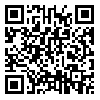Volume 1, Issue 2 (Summer 2015)
Caspian J Neurol Sci 2015, 1(2): 1-7 |
Back to browse issues page
1- Department of Biology, Faculty of Sciences, University of Guilan, Rasht, Iran ; mashayekhi@guilan.ac.ir
2- Department of Biology, Faculty of Sciences, University of Guilan, Rasht, Iran
3- Cellular and Molecular Research Centre, Faculty of Medicine, Qazvin University of Medical Sciences, Qazvin, Iran
2- Department of Biology, Faculty of Sciences, University of Guilan, Rasht, Iran
3- Cellular and Molecular Research Centre, Faculty of Medicine, Qazvin University of Medical Sciences, Qazvin, Iran
Abstract: (4849 Views)
Background: Leukemia inhibitory factor (LIF) is a neurortophic cytokine which plays an important role in the neural cell survival. Expression of LIF and its receptor, LIFR, in different brain regions has been demonstrated. Based on evidences LIF plays an important role in the modulation of neurogenesis and glial responses to injury. Up-regulation of LIF after central nervous system (CNS) damage is an endogenous response that limits injury by a direct protection of neurons and oligodendrocytes. More importantly LIF is an important cytokine that stimulates oligodendrocyte proliferation in vitro. Also Opalin is a unique molecular marker of mature oligodendrocyte. It is a transmembrane protein which is specifically expressed by myelinating oligodendrocytes.
Objectives: The aim of this study was to investigate the effects of LIF on Opalin expression in the Balb/c mouse cerebral cortex.
Materials and Methods: LIF was administered intraperitoneally (IP) to 6 to 8 weeks mice. The second group (SHAM) was injected IP by normal saline and third group was left without injection as the control group (n=9 for each group). One day after injection, the mice were killed by overdose of anaesthetic (sodium pentobarbitone) and brains were removed for further analysis.
Results: Using Western blotting we showed that administration of LIF increases Opalin expression in the cerebral cortex extracts.
Conclusion: The results from this study suggest that LIF increases Opalin expression in the cerebral cortex in vivo.
Type of Study: Research |
Subject:
Special
Received: 2015/07/9 | Accepted: 2015/07/9 | Published: 2015/07/9
Received: 2015/07/9 | Accepted: 2015/07/9 | Published: 2015/07/9
| Rights and permissions | |
 | This work is licensed under a Creative Commons Attribution-NonCommercial 4.0 International License. |



